TO RETURN TO 1970s MAIN PAGE CLICK HERE
U.S. SPACECRAFT 1960s and 70sB
U.S. SPACECRAFT 2000 and BEYONDB CLICK HERE
U.S. SPACECRAFT 2000 and BEYOND CLICK HERE
FOR ADDITIONAL INFORMATION CONCERNING SPACECRAFT, THEIR CAMERAS AND IMAGERS SHOWN ON THIS SITE CLICK HERE
FOR INFORMATION ON NON-ASTRONOMY CCDS - COMMERCIAL, INDUSTRIAL, SCIENTIFIC, MEDICAL, ETC. CLICK HERE
TO GO TO JANESICK CONTINUATIONPAGE CLICK HERE
U.S. SPACECRAFT 1980s and 90s
1989 GALILEO
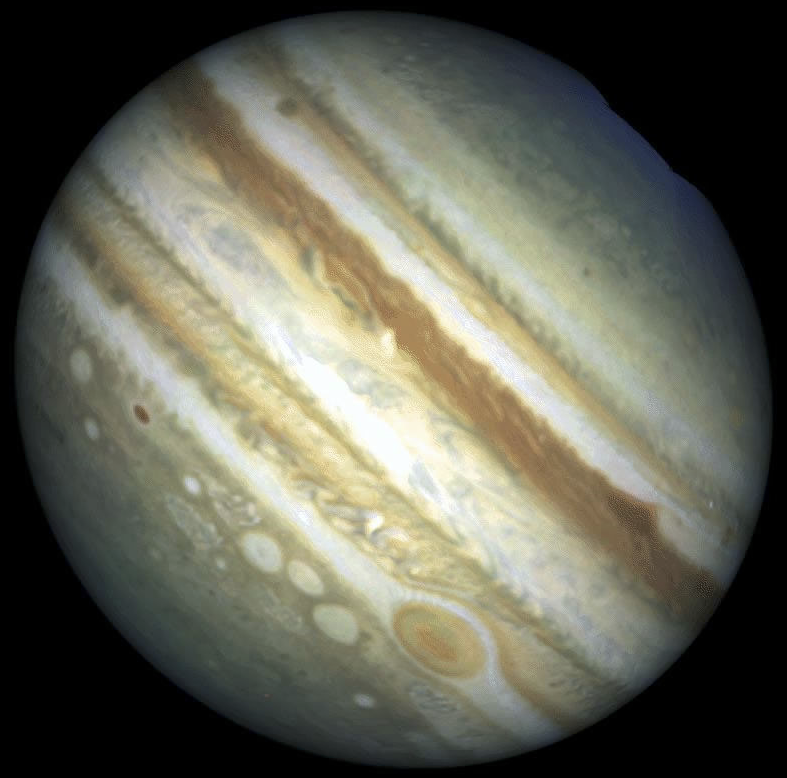
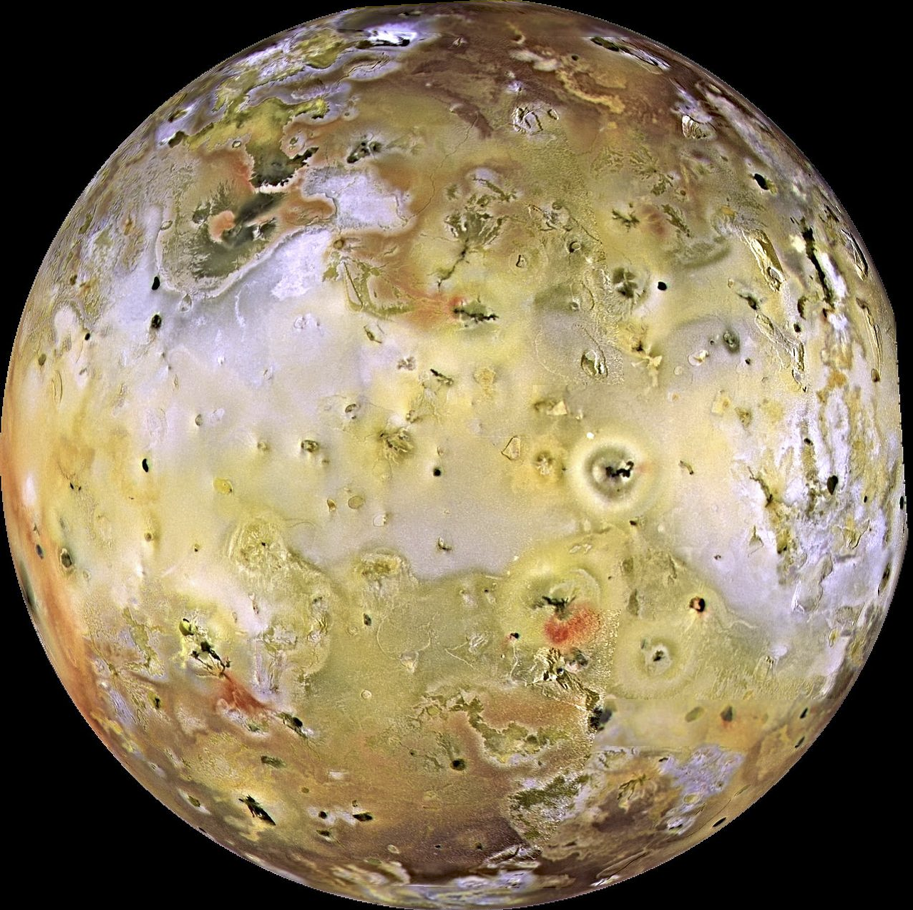
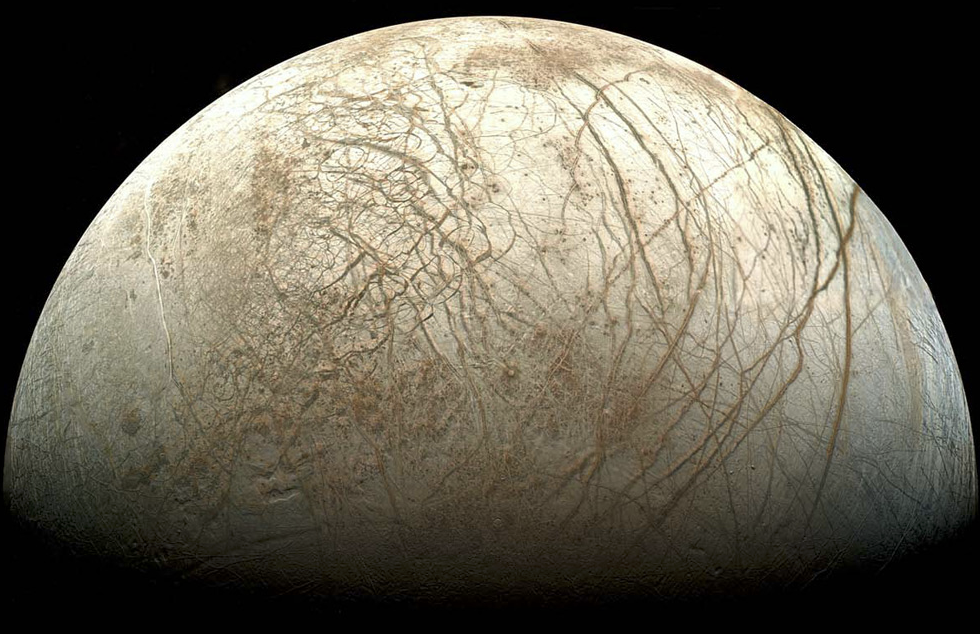
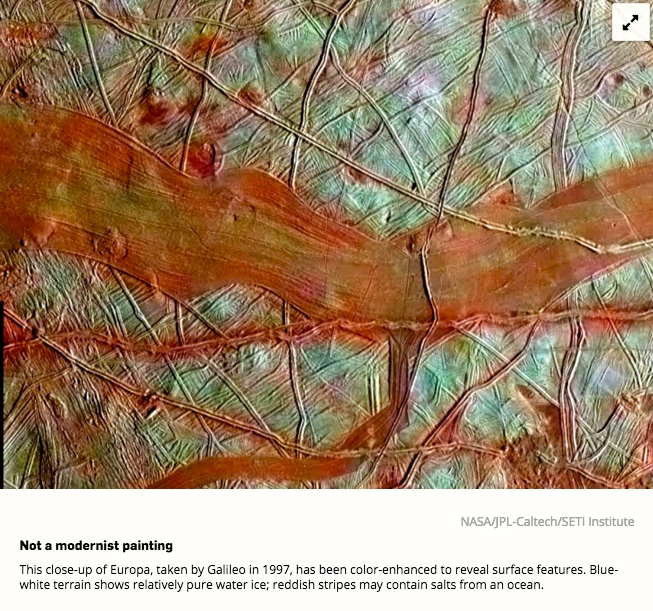
Jupiter and its moons Io and Europa as photographed by the spacecraft
Galileo. Io is the innermost of the four Galilean moons of the
planet Jupiter. It is the fourth-largest moon, has the highest density
of all the moons, and is the driest known object in the Solar System.
It was discovered in 1610 and was named after the mythological
character Io, a priestess of Hera who became one of Zeus's
lovers. With over 400 active volcanoes, Io is the most
geologically active object in the Solar System. This extreme geologic
activity is the result of tidal heating from friction generated within
Io's interior as it is pulled between Jupiter and the other Galilean
satellites, Europa, Ganymede and Callisto. Several volcanoes produce
plumes of sulfur and sulfur dioxide that climb as high as 500 km
(300 mi) above the surface. Io's surface is also dotted with more
than 100 mountains that have been uplifted by extensive compression at
the base of Io's silicate crust. Some of these peaks are taller than
Mount everest. Unlike most satellites in the outer Solar System, which
are mostly composed of water ice, Io is primarily composed of silicate
rock surrounding a molten iron or iron-sulfide core. Most of Io's
surface is composed of extensive plains coated with sulfur and
sulfur-dioxide frost (https://en.wikipedia.org/wiki/Io_%28moon%29).
Europa is the sixth-closest moon of Jupiter, and the smallest of its
four, but still the sixth-largest moon in the Solar System. Europa was
discovered in 1610 by Galileo Galilei and was named after Europa,
mother of king Minos of Crete, who became one of Zeus' lovers.
Progressively better observations of Europa have occurred over the
centuries by Earth-bound telescopes, and by space probe flybys starting
in the 1970s. Slightly smaller than the Moon, Europa is primarily
made of silicate rock and has a water-ice crust and probably an
iron-nickel core. It has a tenuous atmosphere composed primarily of
oxygen. Its surface is striated by cracks and streaks, whereas craters
are relatively rare. It has the smoothest surface of any known solid
object in the Solar System. The apparent youth and smoothness of the
surface have led to the hypothesis that a water ocean exists beneath
it, which could conceivably serve as an abode for extraterrestrial
life. This hypothesis proposes that heat from tidal flexing causes the
ocean to remain liquid and drives geological activity similar to plate
tectonics. On 8 September 2014, NASA reported finding evidence
supporting earlier suggestions of plate tectonics in Europa's thick ice
shell, the first sign of such geological activity on a world other than
Earth. On 12 May 2015, scientists announced that sea salt from a
subsurface ocean may be coating some geological features on Europa,
suggesting that the ocean is interacting with the sea floor (https://en.wikipedia.org/wiki/Europa_%28moon%29).
Years of Jupiter's intense radiation took its toll on the spacecraft's
systems, and its fuel supply was running low in the early 2000s.
Galileo had not been sterilized, so to prevent contamination of
Jupiter's moons, a plan was formulated to send it directly into the
planet. Galileo was intentionally commanded to crash into
Jupiter, which eliminated the possibility it would impact Jupiter's
moons and seed them with bacteria. In order to crash into
Jupiter, Galileo flew by on November 5, 2002, during its 34th
orbit, allowing a measurement of the moon's mass as it passed within
101 mi of its surface. On April 14, 2003, Galileo reached its
greatest distance from Jupiter for the entire mission prior to orbital
insertion, 16,000,000 mi, before plunging back towards the gas giant
for its final impact. At the completion of its 35th and final
circuit around the Jovian system, Galileo impacted the gas giant in
darkness just south of the equator on September 21, 2003. Its impact
speed was approximately 107,955 mph.The total mission cost was about
US $1.4 billion. (James R. Janesick)
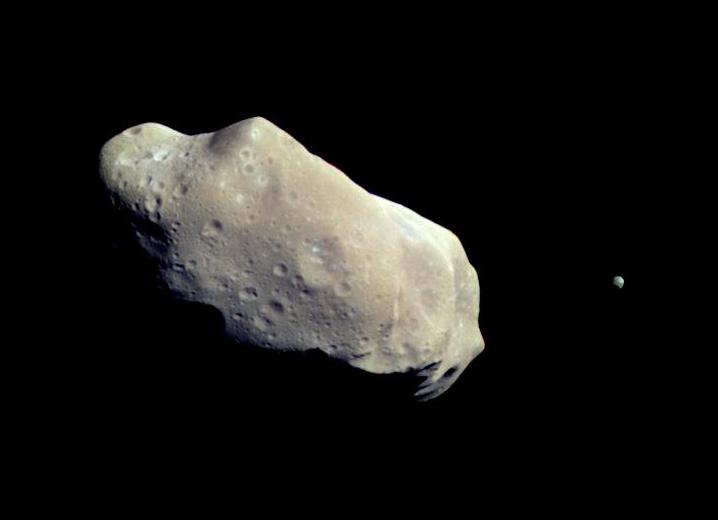

This image is
of the asteroid Ida (about 35 miles long) and its small moon Dactyl (about 1 mile) in a photo taken by the
spacecraft Galileo, the first of an asteroid with its own moon.
1990s and BEYOND
1991 YOHKOH SOLAR X-RAY TELESCOPE (SXT)
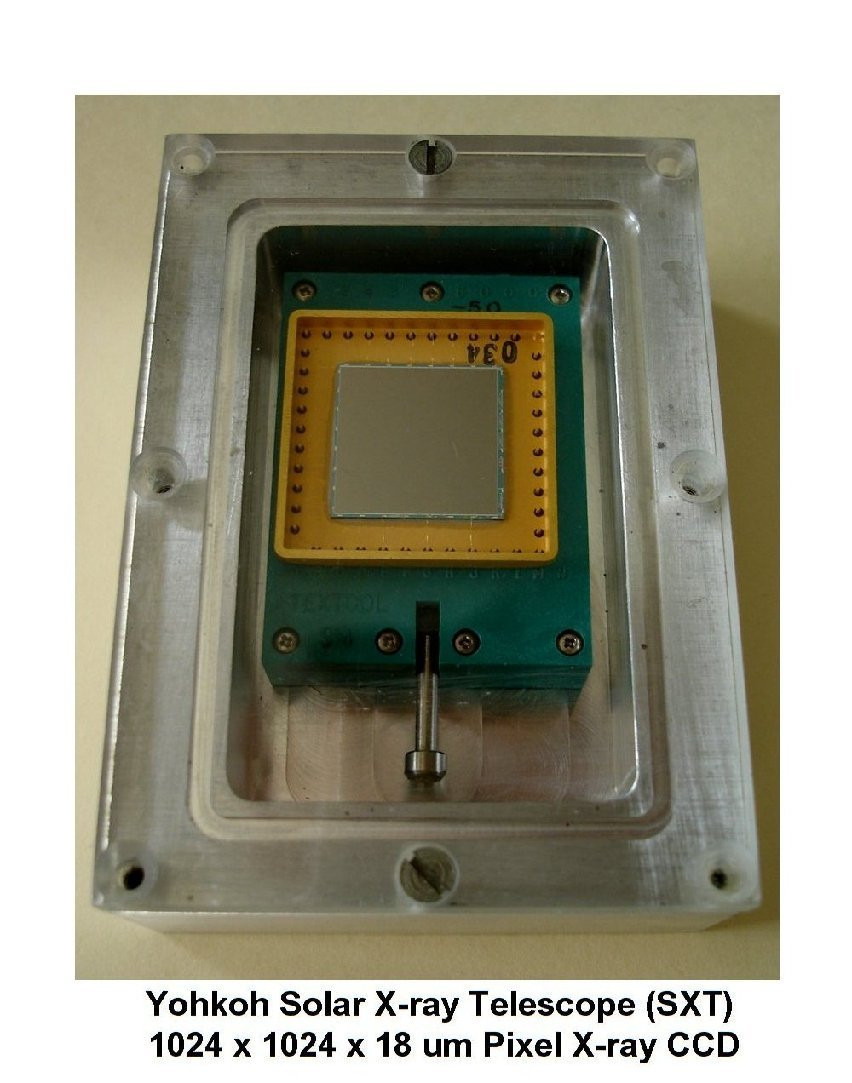

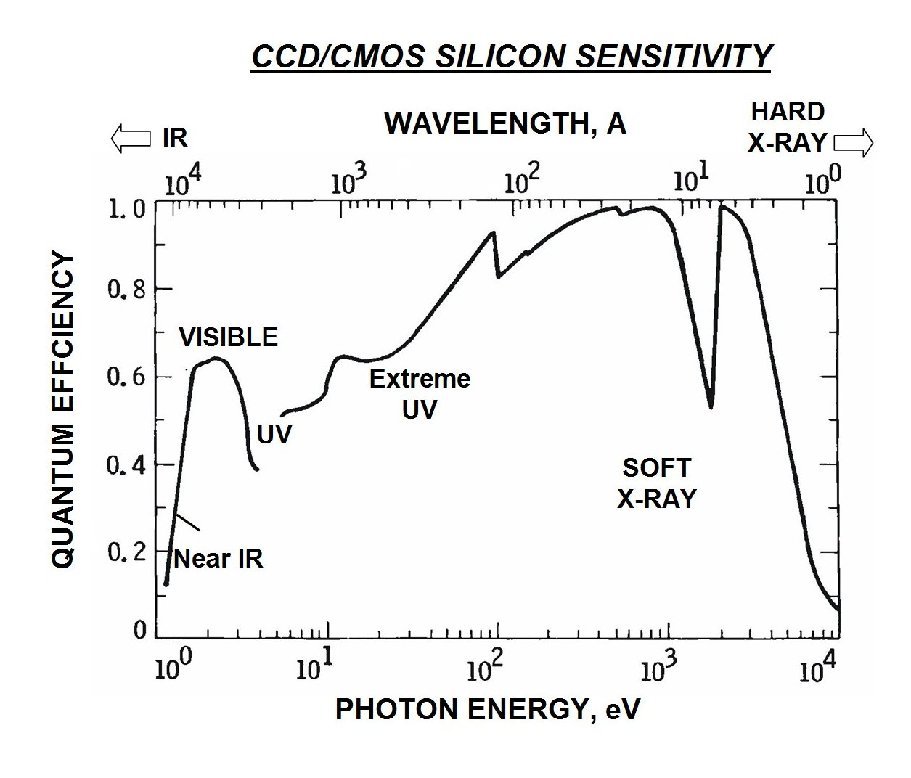

The SXT was the first
X-ray camera launched into space. Janesick was involved with the SXT
mission for five years and was responsible for the 1024 x 1024 x 18 um Virtual
Phase CCD flown as well as the associated analog electronics required
to read the device. Diagramin the center illustrates the wide range of electromagnetic wave
sensitivity of CCD and CMOS imagers which makes them so valuable for
astronomical use in addition
to their extreme sensitivty to visiblel light. The photo
on the right is an X-ray image of the sun. The above CCD
is similar to the one used for YOHKOH and was dontated to
DigiCamHistory.Com by Jim Janesick.
1993 HUBBLE WF/PC II
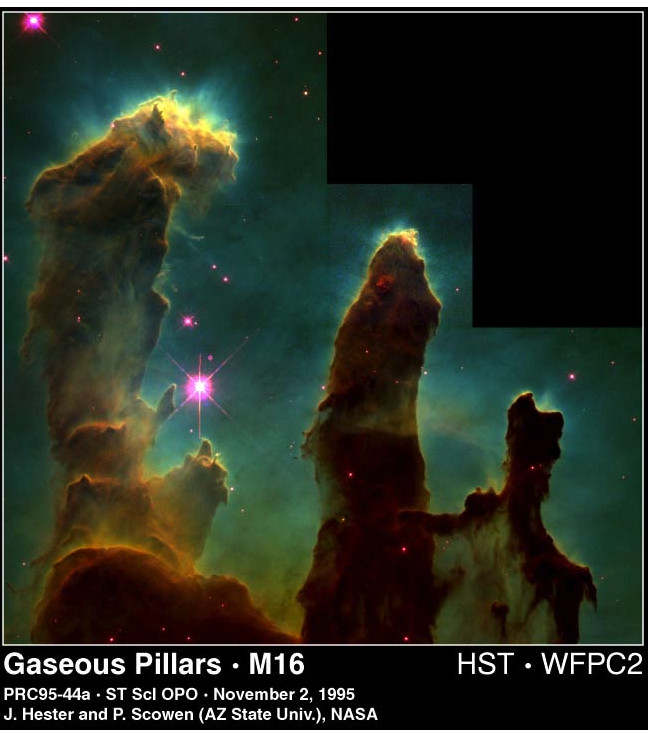
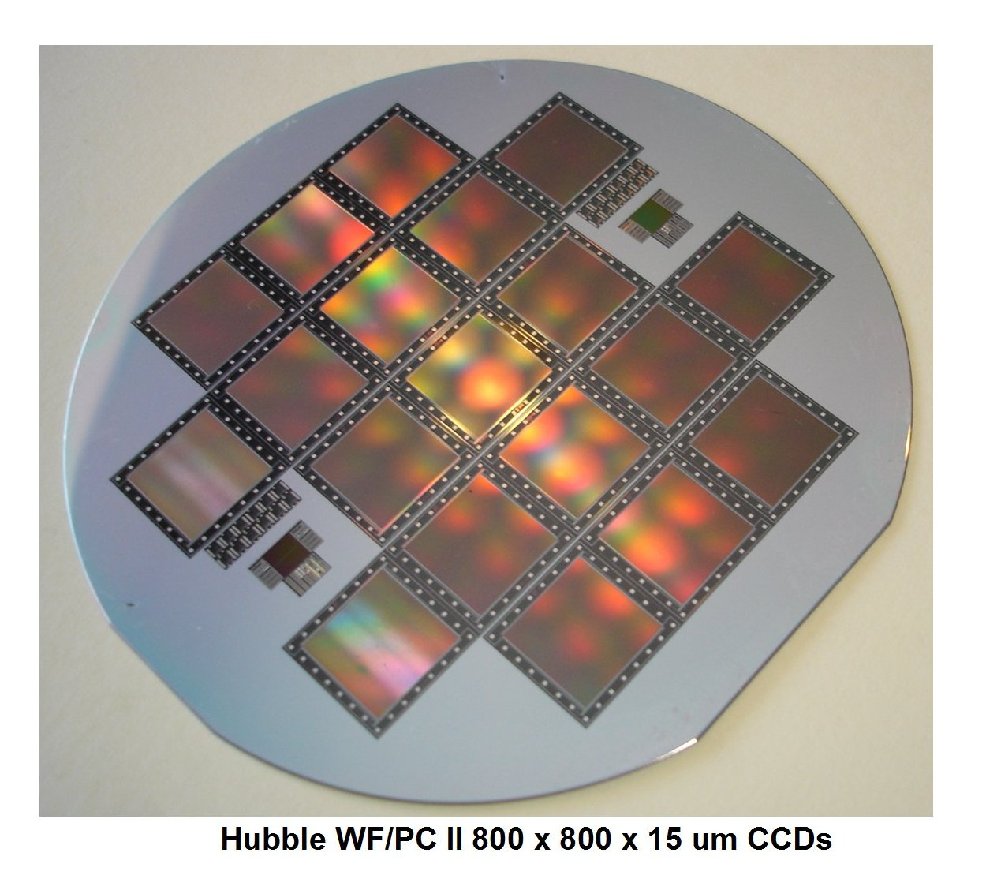

This silicon wafer above is similar to the Hubble WF/PC II 800 x 800 x
15 um
imagers. Hubble's focus problem was fixed with the WF/PC II
camera. There were only 4 CCDs on this mission - 3
wide field (f/30) and 1 planetary(f12.0) instead of the eight used on
WF/PC I. WF/PC II was the most used instrument in the first 13
years of Hubble's life. The WF/PC II imagers and the Cassini 1024
x 1024 x 12 um imagers were fabricated at the same time (at Ford
Aerospace Newport Beach). Wafer photo by James Janesick.
Photo on the right was by the corrected Hubble camera using WF/PC
II. The above CCD wafer was donated to DigiCamHistory.Com by Jim
Janesick
1996 PEGASUS



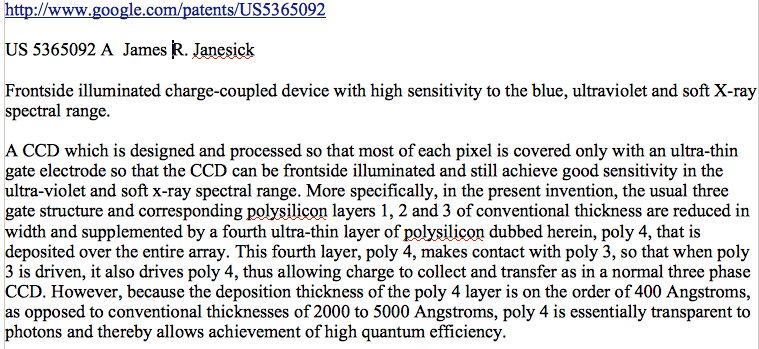
Thin Gate CCD designed by James R. Janesick for the purpose of
improving sensitivity to the blue, ultraviolet and soft X-ray spectral
range.

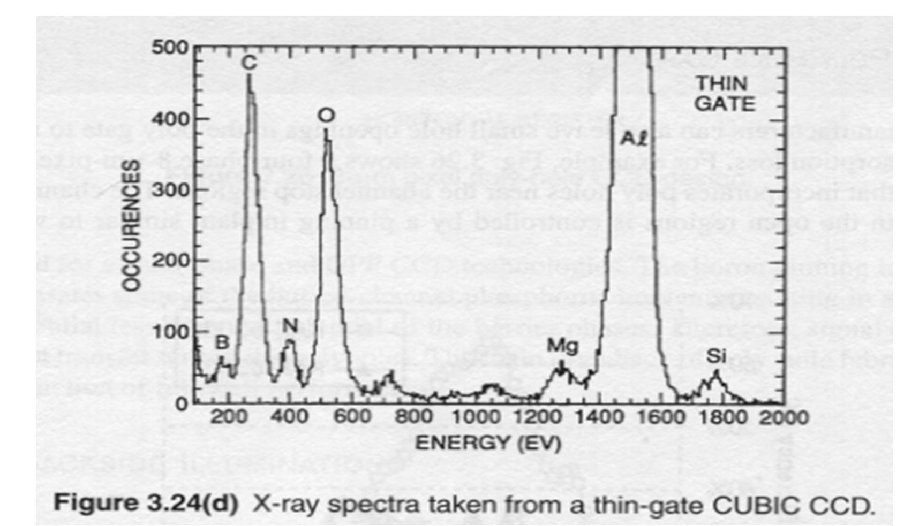
This silicon wafer above is similar to the Hubble WF/PC II 800 x 800 x
15 um
imagers. Hubble's focus problem was fixed with the WF/PC II
camera. There were only 4 CCDs on this mission - 3
wide field (f/30) and 1 planetary(f12.0) instead of the eight used on
WF/PC I. WF/PC II was the most used instrument in the first 13
years of Hubble's life. The WF/PC II imagers and the Cassini 1024
x 1024 x 12 um imagers were fabricated at the same time (at Ford
Aerospace Newport Beach). Wafer photo by James Janesick.
Photo on the right was by the corrected Hubble camera using WF/PC
II. The above CCD wafer was donated to DigiCamHistory.Com by Jim
Janesick
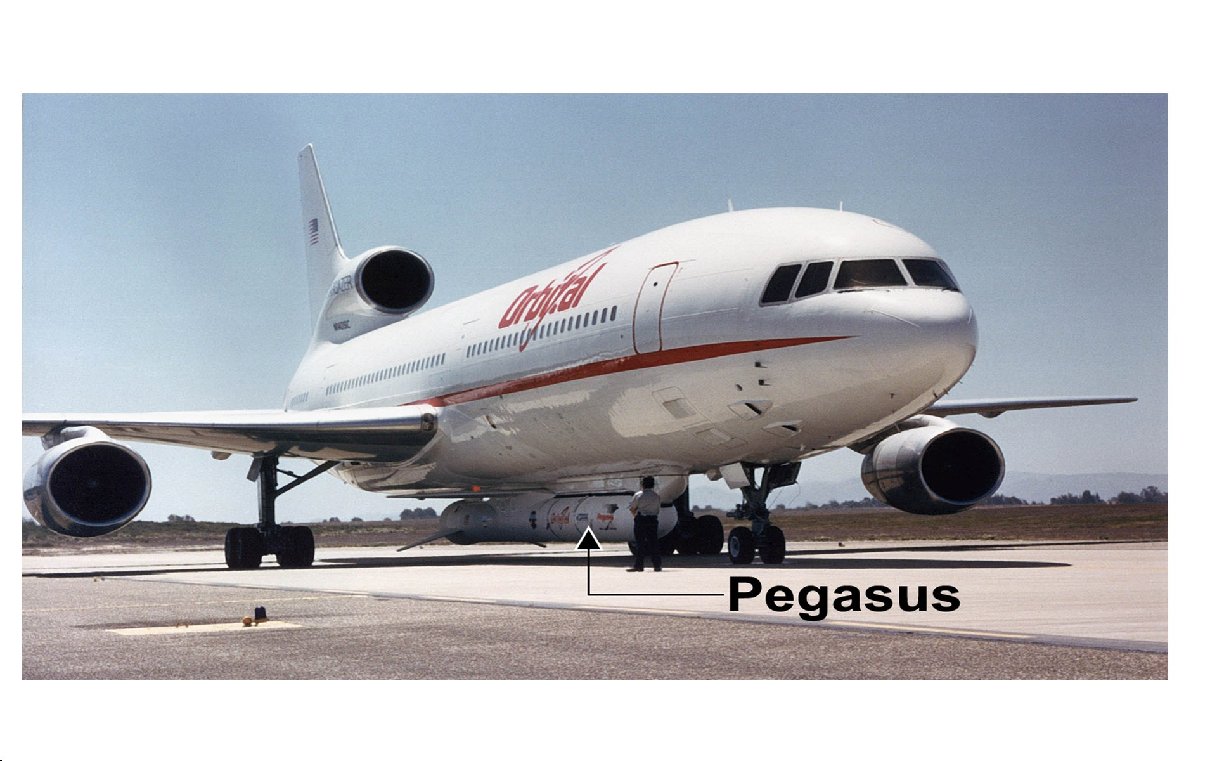
1996 MARS GLOBAL SURVEYOR
Mars Global Surveyor (MGS) was an
American robotic spacecraft developed by NASA's Jet Propulsion
Laboratory and launched November 1996. Mars Global Surveyor was a
global mapping mission that examined the entire planet, from the
ionosphere down through the atmosphere to the surface.[1] As part of
the larger Mars Exploration Program, Mars Global Surveyor performed
monitoring relay for sister orbiters during aerobraking, and it helped
Mars rovers and lander missions by identifying potential landing sites
and relaying surface telemetry
1997 CASSINI
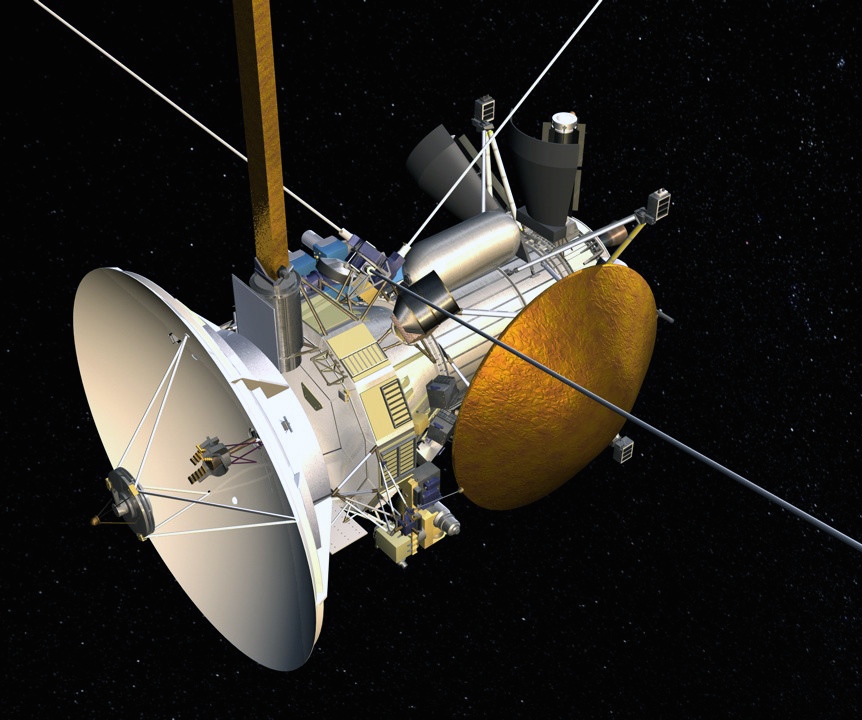



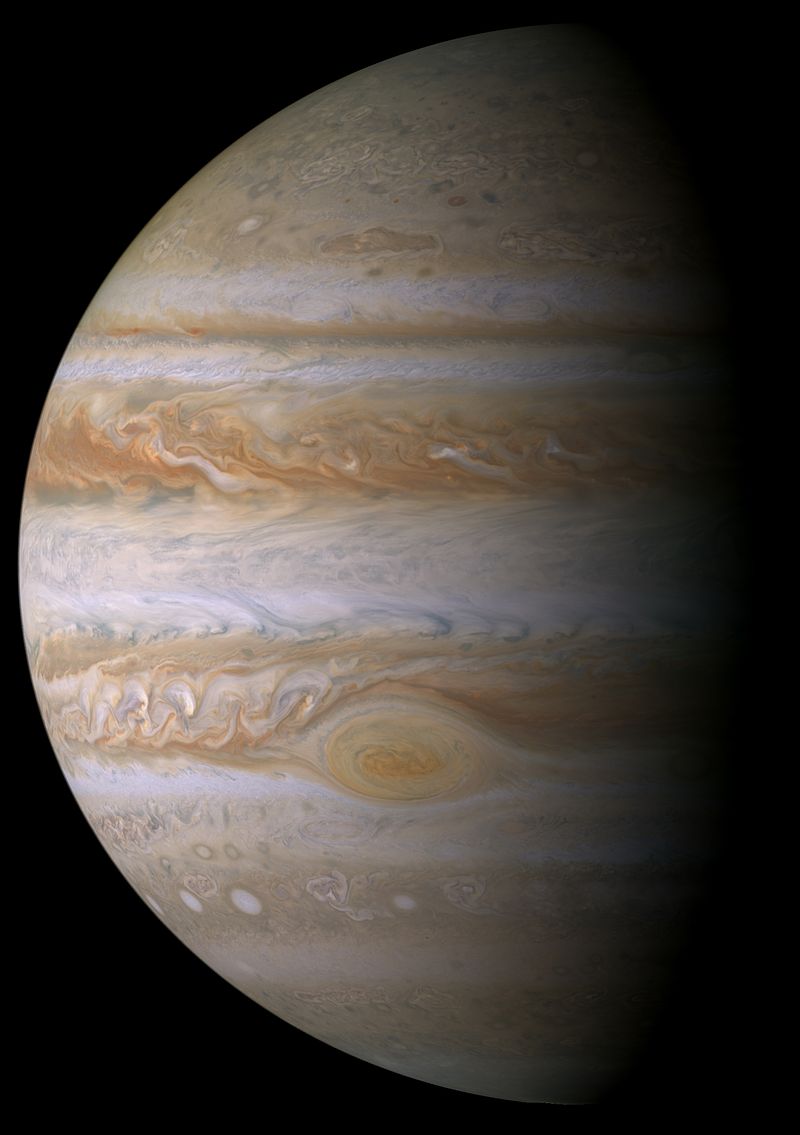
Cassini-Huygens is
an unmanned spacecraft sent to
the planet Saturn. It is
a flagship-class NASA-ESA-ASI robotic
spacecraft. Cassini is the fourth space probe to visit
Saturn and the first to enter orbit, and its mission is ongoing as of
2015. It has studied the planet and its many natural
satellites since arriving there in 2004. Development started
in the 1980s. Its design includes a Saturn orbiter,
and a lander for the moon Titan. The lander, called Huygens,
landed on Titan in 2005. The two-part spacecraft is named after
astronomers Giovanni Cassini and Christiaan
Huygens. The spacecraft launched on October 15, 1997 aboard
a Titan
IVB/Centaur and entered orbit around Saturn on July 1, 2004, after
an interplanetary voyage that included flybys of Earth, Venus, and
Jupiter (above right). On December 25, 2004, Huygens separated from the
orbiter and reached Saturn's moon Titan on January 14, 2005. It
entered Titan's atmosphere and descended to the surface. It
successfully returned data to Earth, using the orbiter as a relay. This
was the first landing ever accomplished in the outer
Solar System. The Cassini system has been used in several Air Force Office of Scientific Research programs.
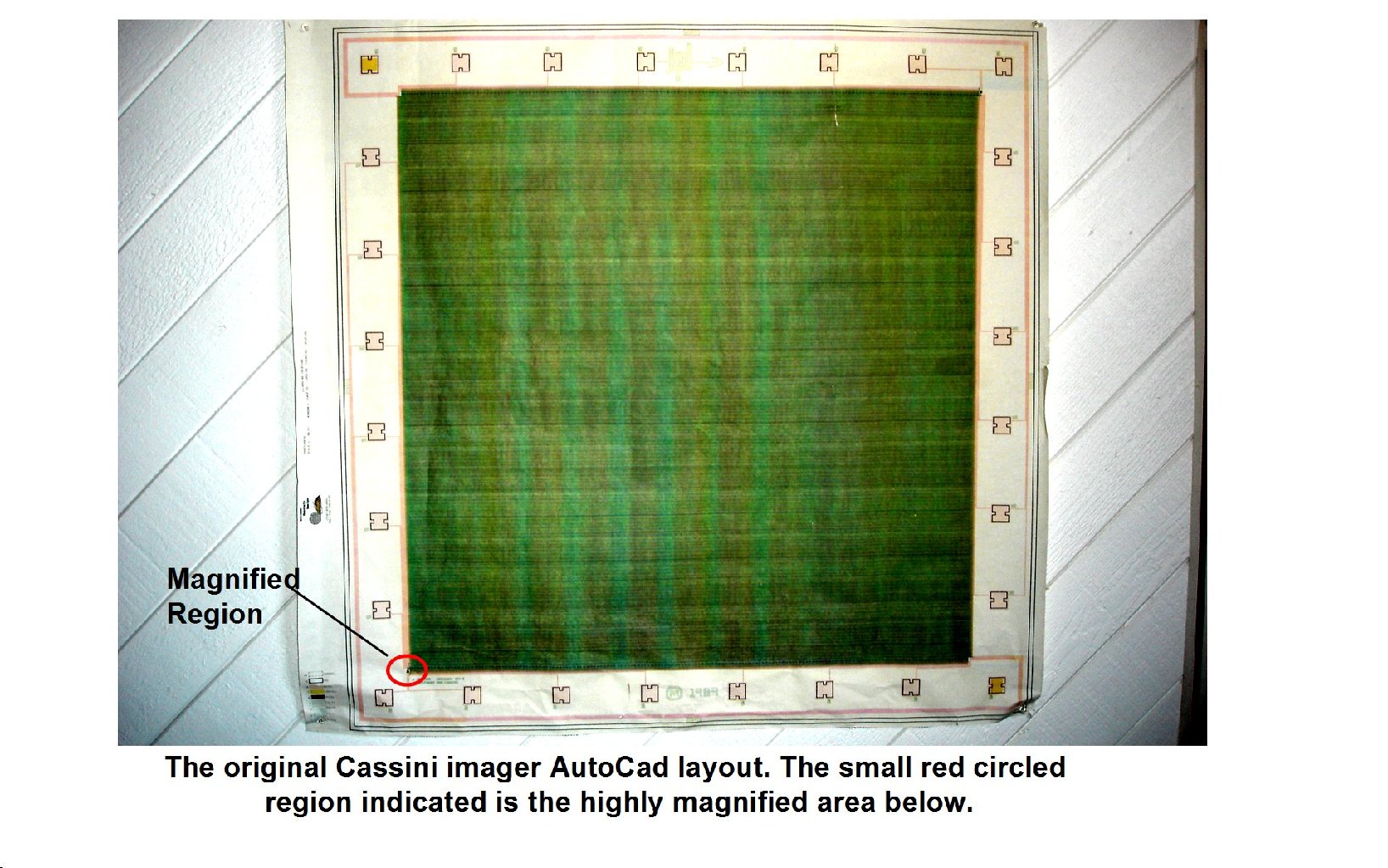
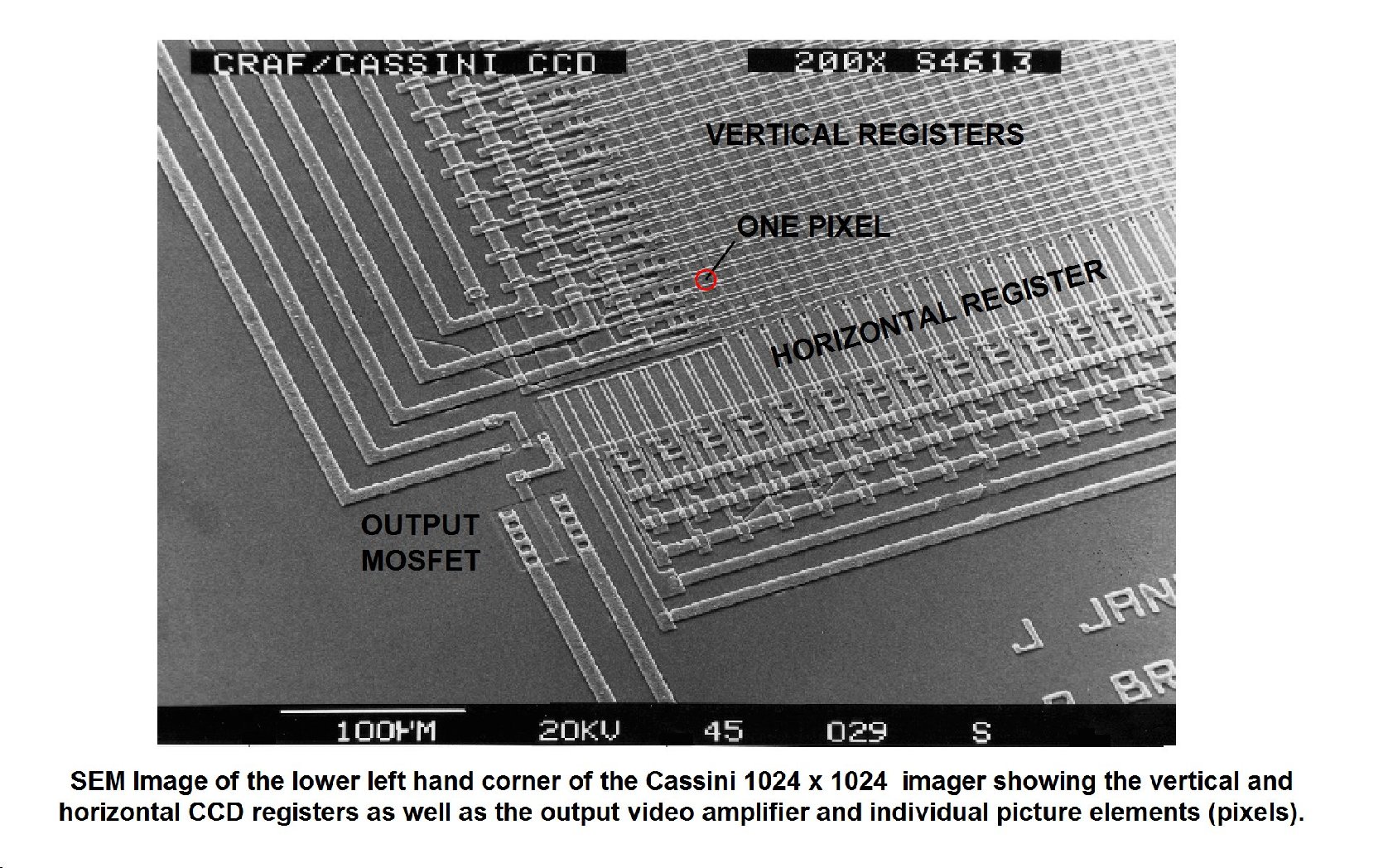
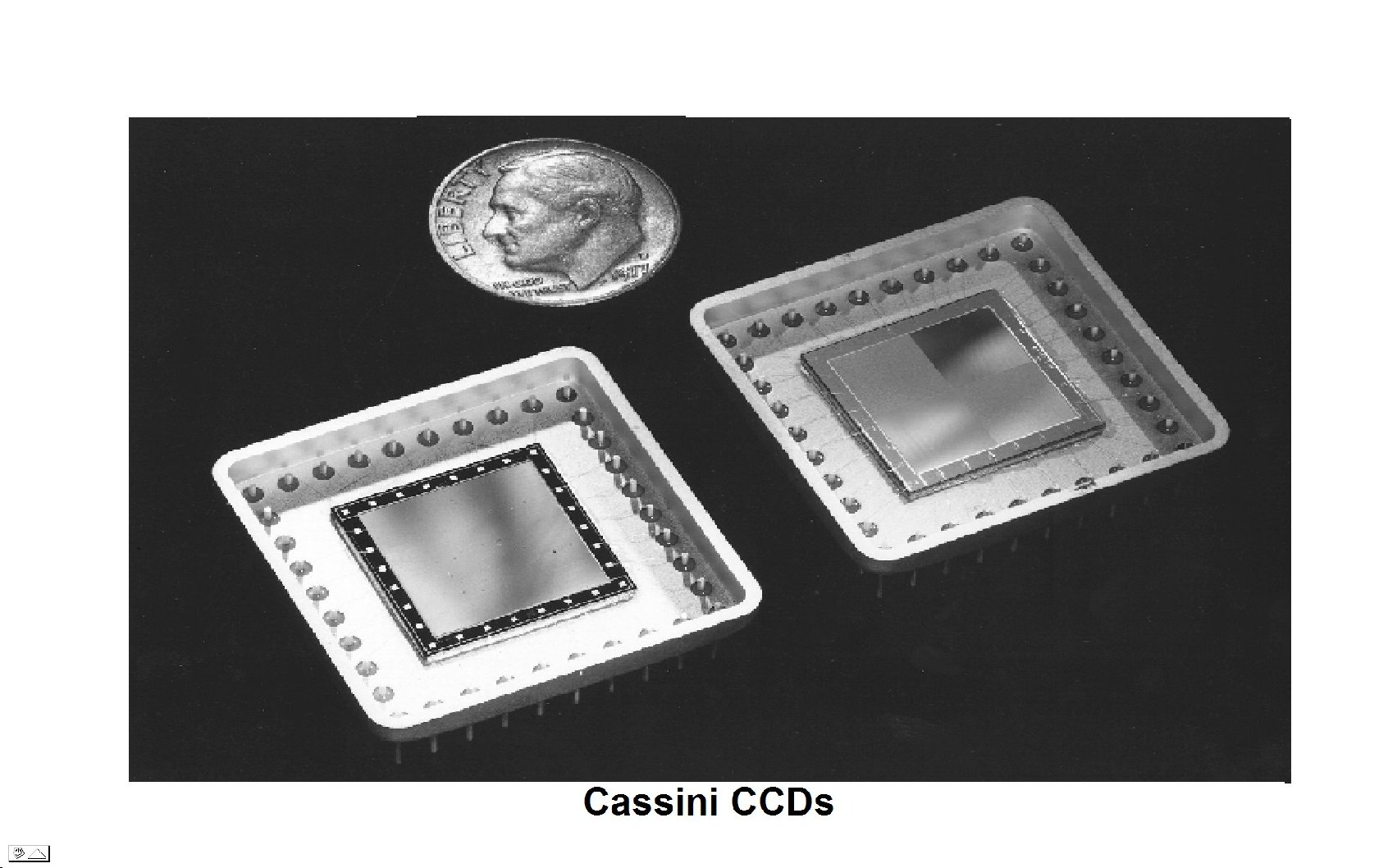
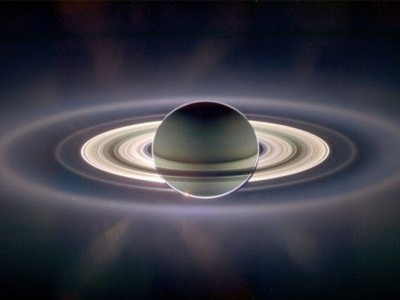
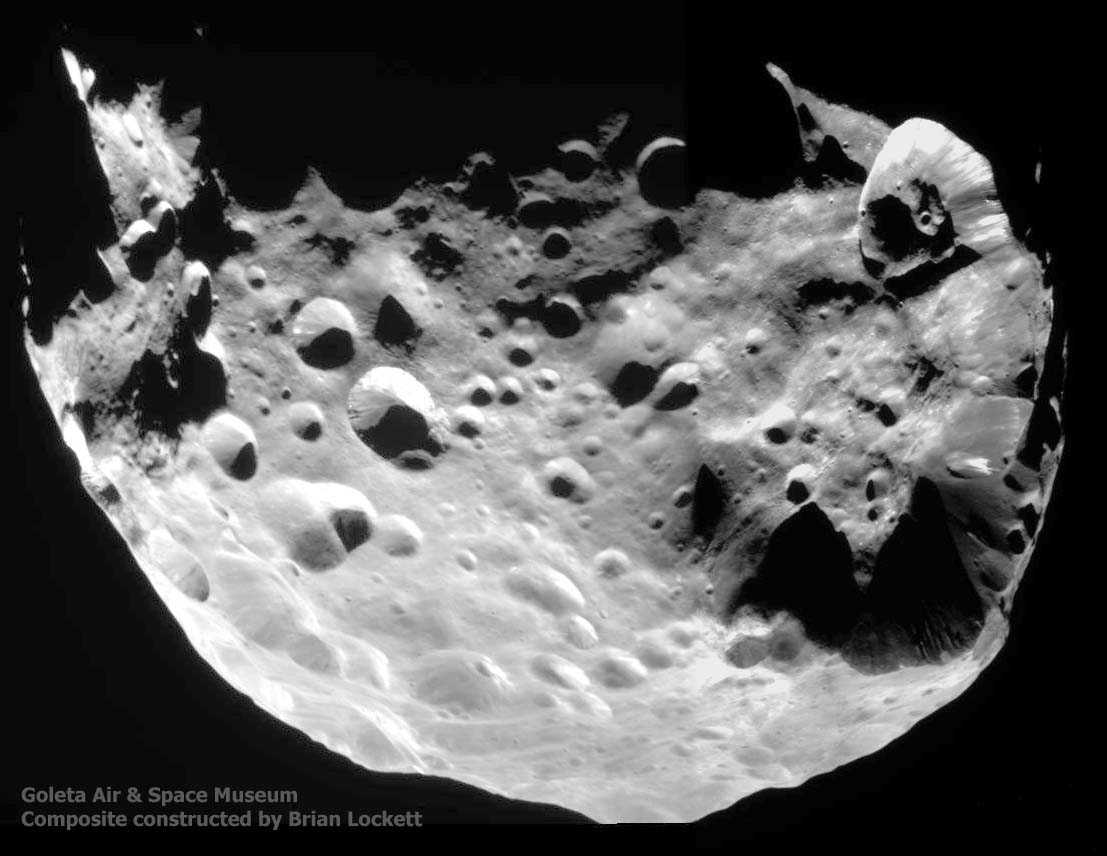
Saturn's rings and one of its moons, Phoebe, photographed by Cassini-Huygens
1998 DEEP SPACE 1
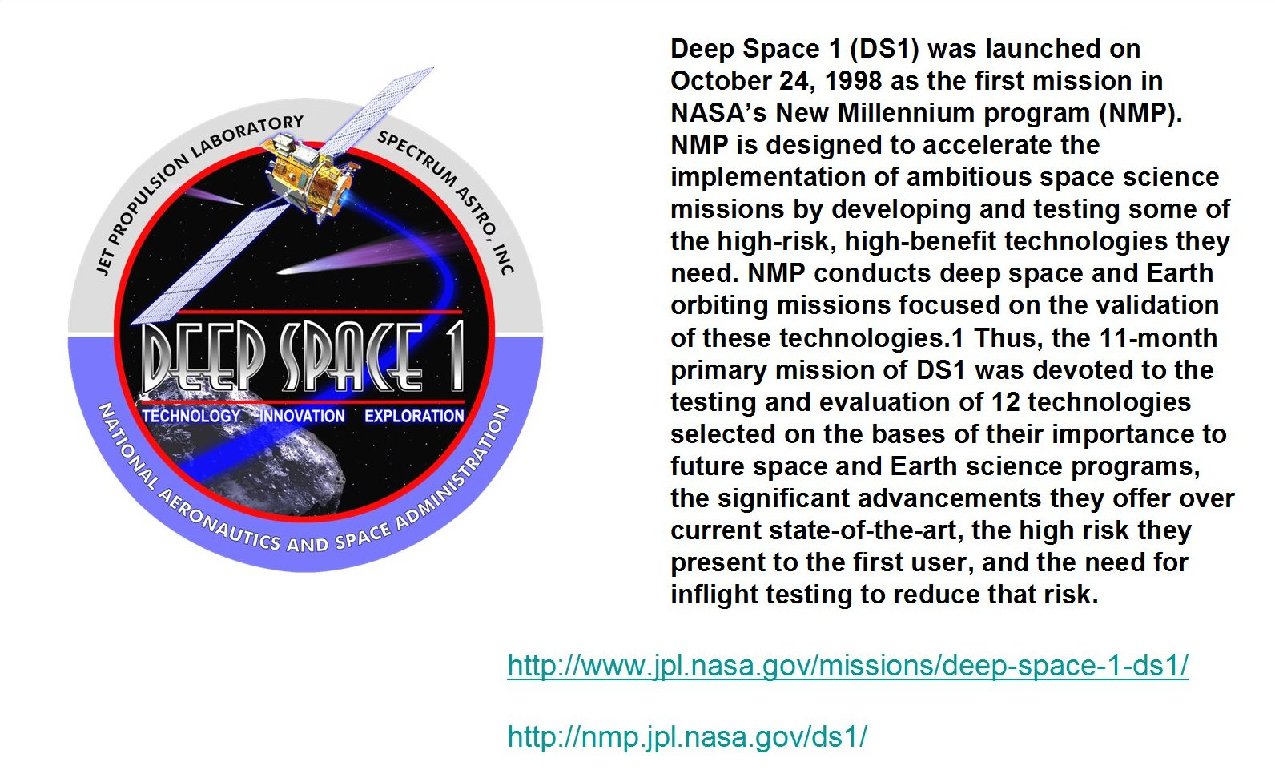
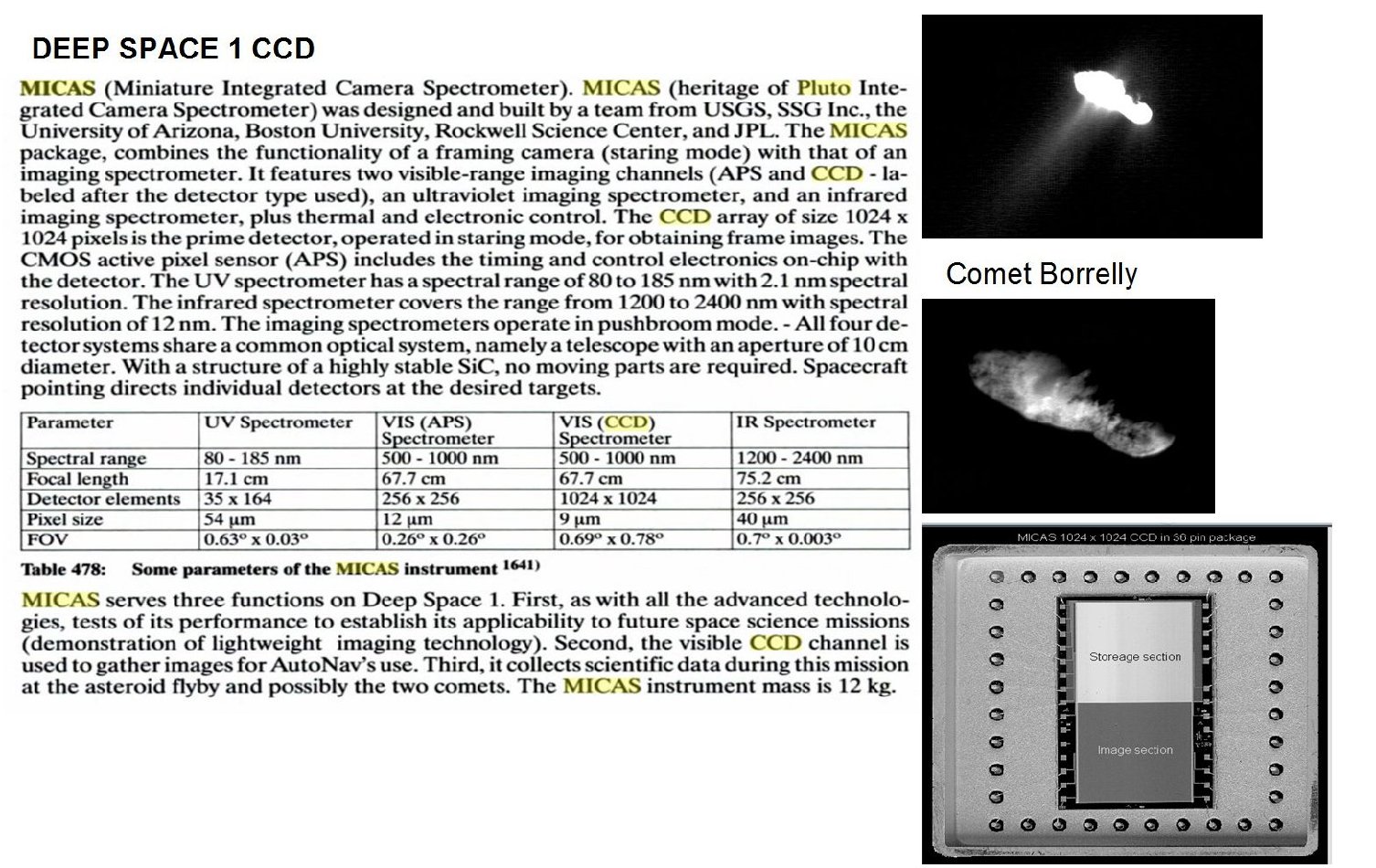
1999 NASA'S STARDUST
Stardust was a 300-kilogram robotic space probe launched by NASA
on February 7, 1999. Its primary mission was to collect dust samples
from the coma of comet Wild 2, as well as samples of cosmic dust, and
return these to Earth for analysis. It was the first sample return
mission of its kind. En route to comet Wild 2, the craft also flew by
and studied the asteroid 5535 Annefrank. The primary mission was
successfully completed on January 15, 2006, when the sample return
capsule returned to Earth.
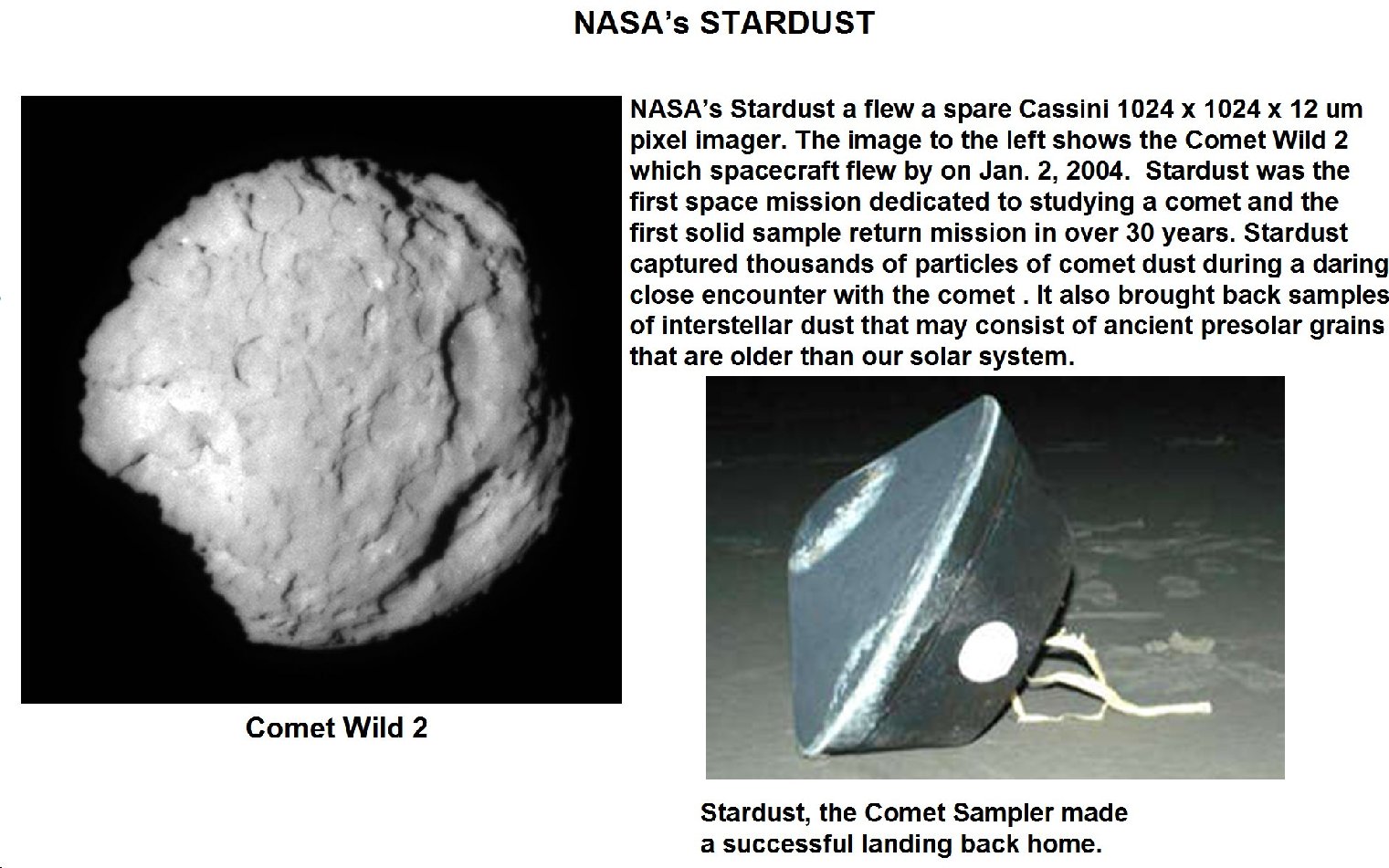



1999 NASA'S MISR
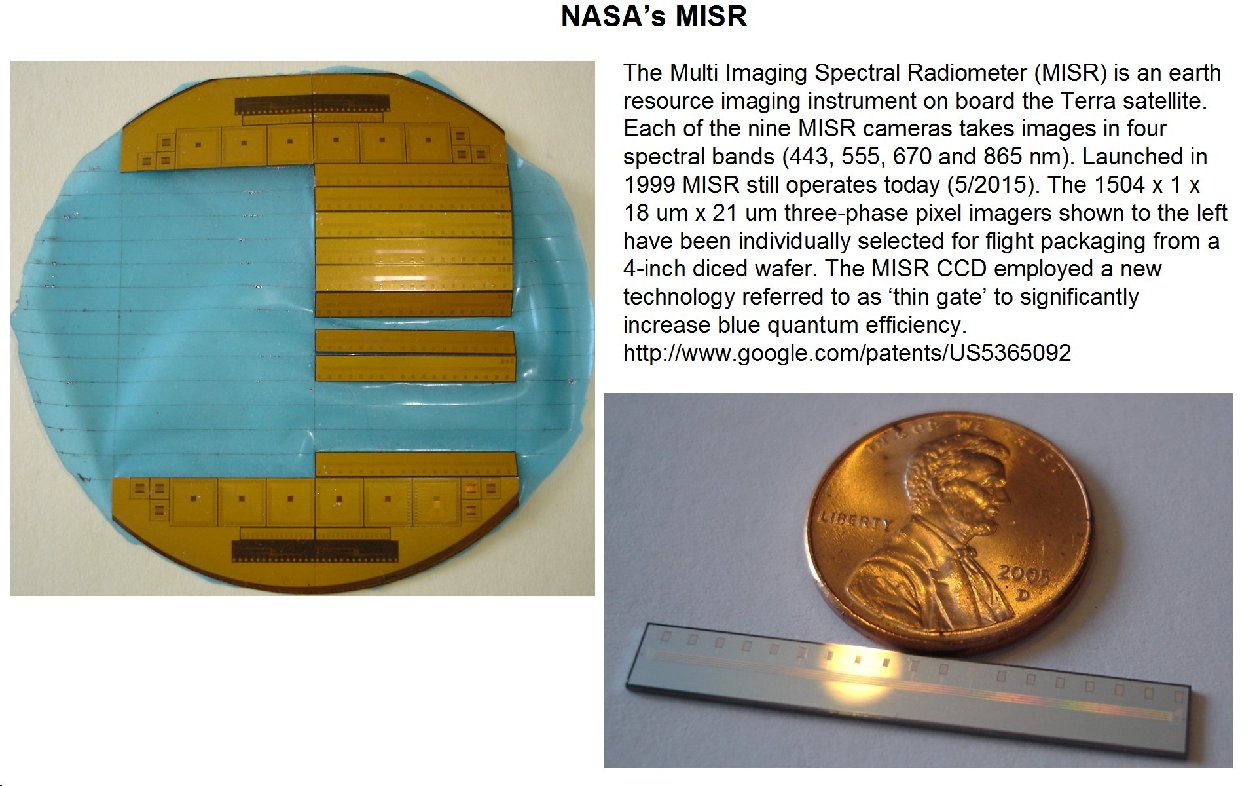

The above silicon wafer is scribed and diced. There is a
yellow/orange photoresist that helps protect imagers during the dicing
process. The resist can be simply removed with
alcohol. An indiviudal imager is shown next to a
penny. The MISR spacecraft is still operating.
It sends back significant data every day. Appears
that it's going to continue to operate for many years to come..
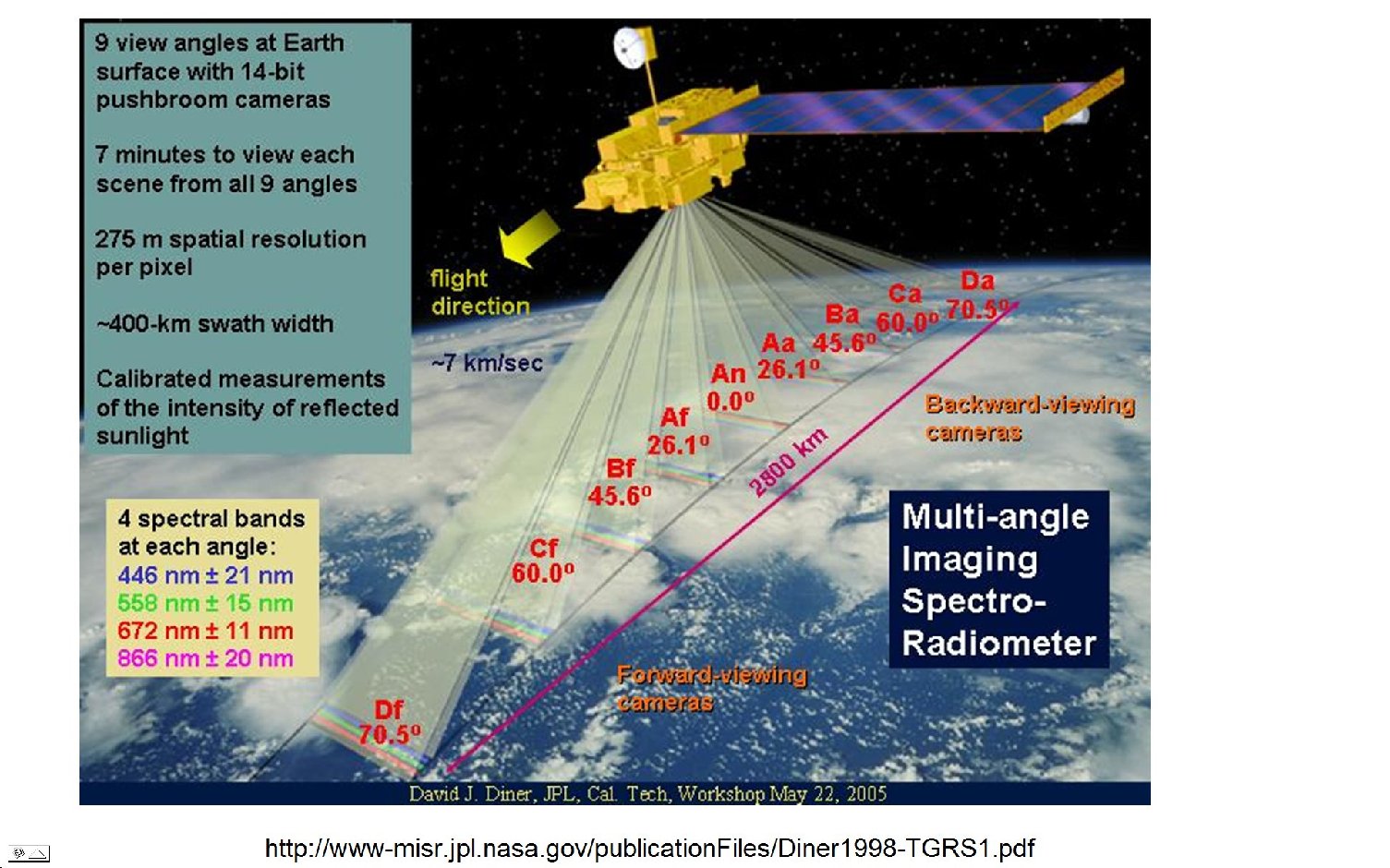
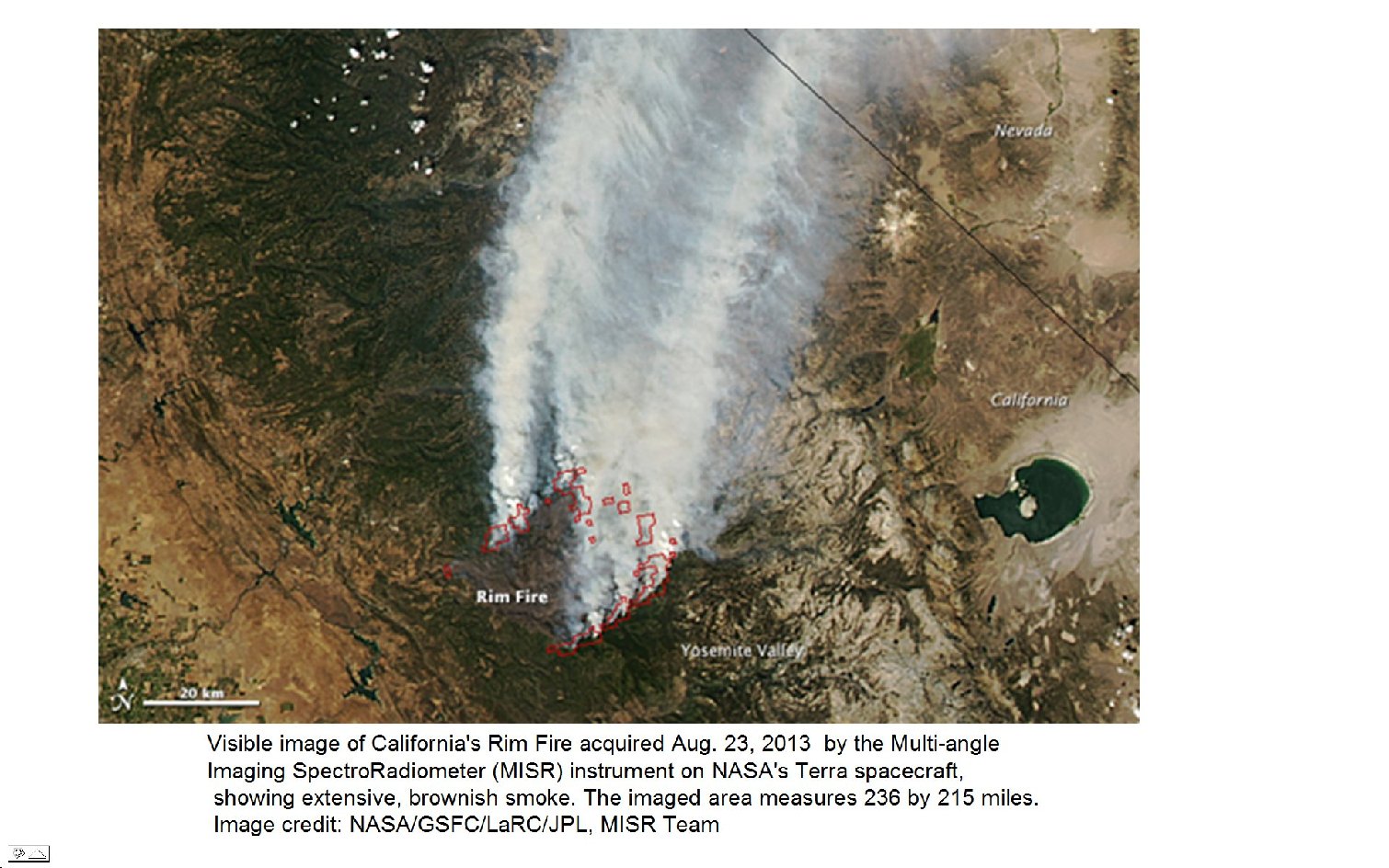
James R. Janesick CCD Patent information: http://www.google.com/patents/US5365092
MISR Information: http://www-misr.jpl.nasa.gov/publicationFiles/Diner1998-TGRS1.pdf
TO RETURN TO 1970s MAIN PAGE CLICK HERE
U.S. SPACECRAFT 1960s and 70sB
U.S. SPACECRAFT 2000 and BEYONDB CLICK HERE
U.S. SPACECRAFT 2000 and BEYOND CLICK HERE
FOR ADDITIONAL INFORMATION CONCERNING SPACECRAFT, THEIR CAMERAS AND IMAGERS SHOWN ON THIS SITE CLICK HERE
FOR INFORMATION ON NON-ASTRONOMY CCDS - COMMERCIAL, INDUSTRIAL, SCIENTIFIC, MEDICAL, ETC. CLICK HERE
TO GO TO JANESICK CONTINUATIONPAGE CLICK HERE






























